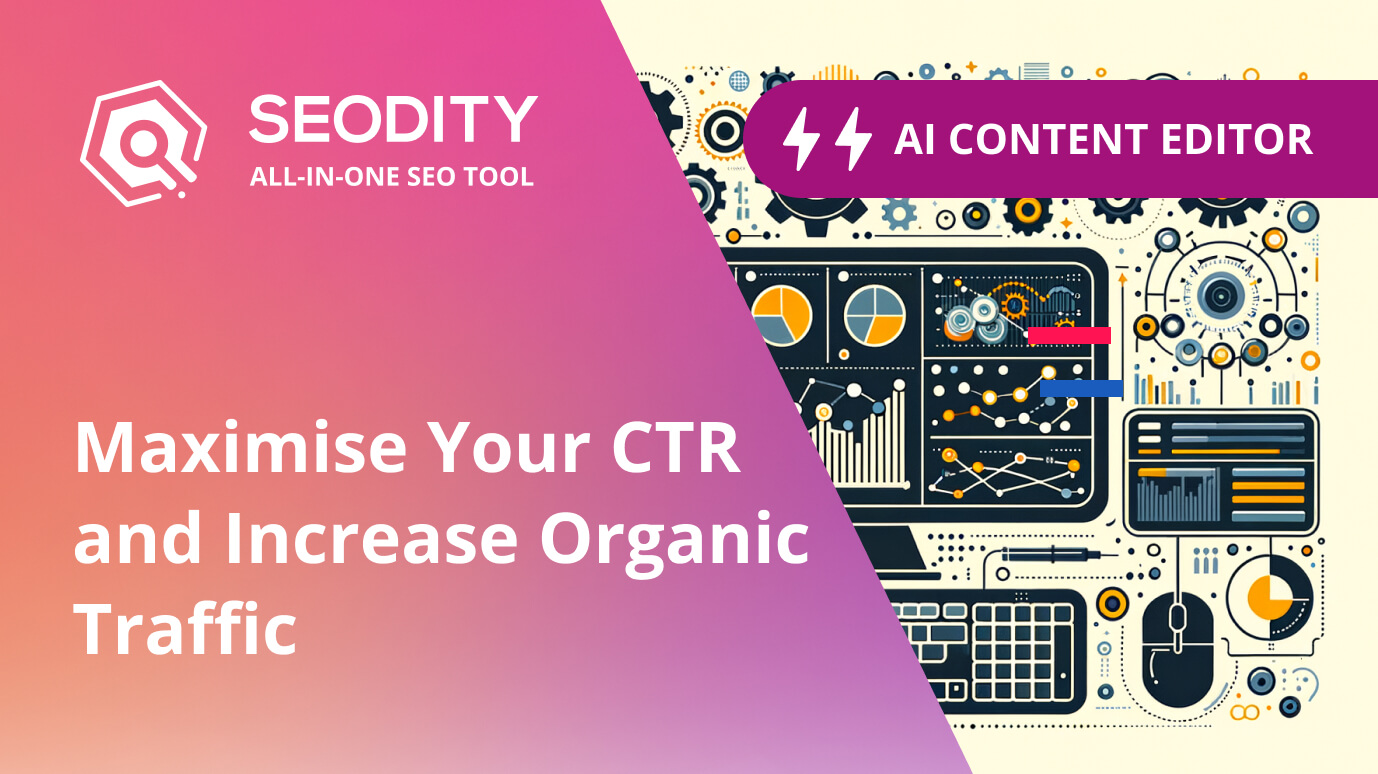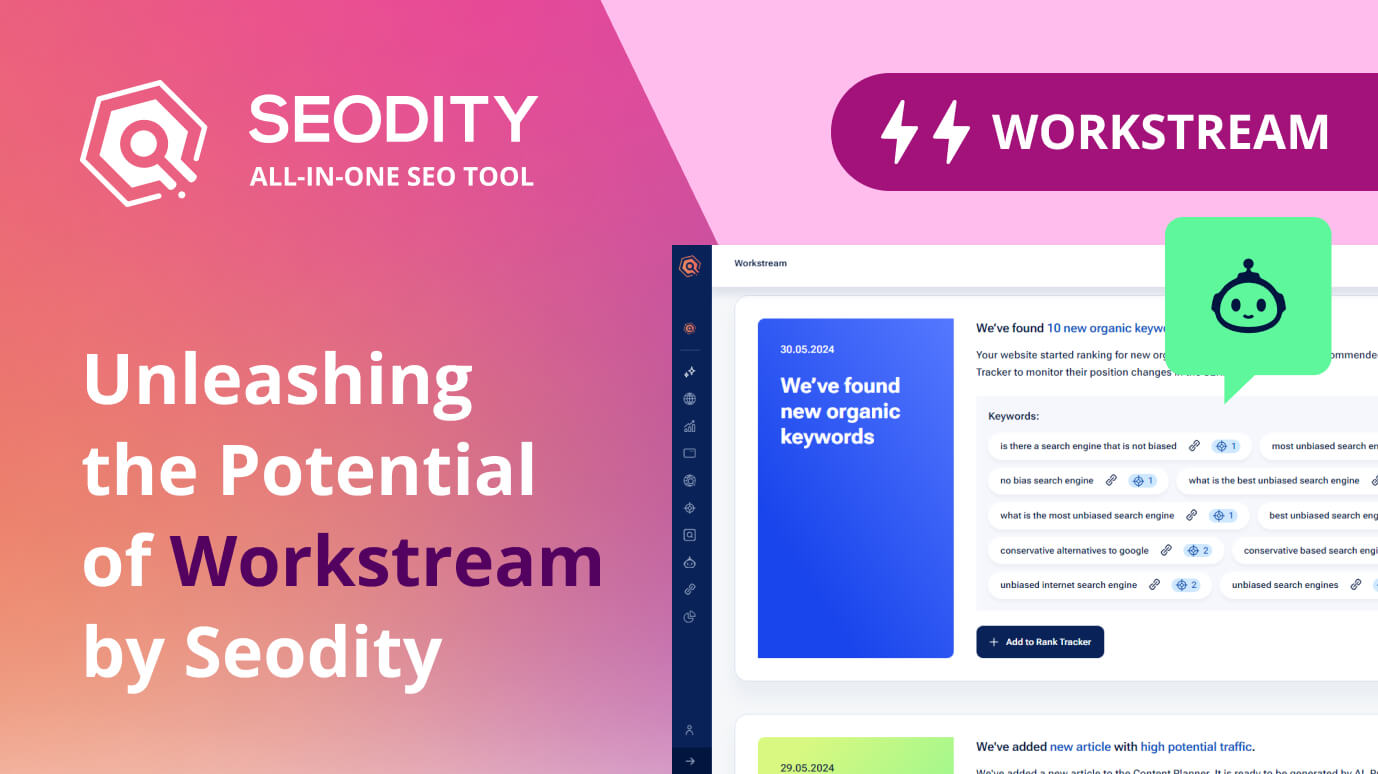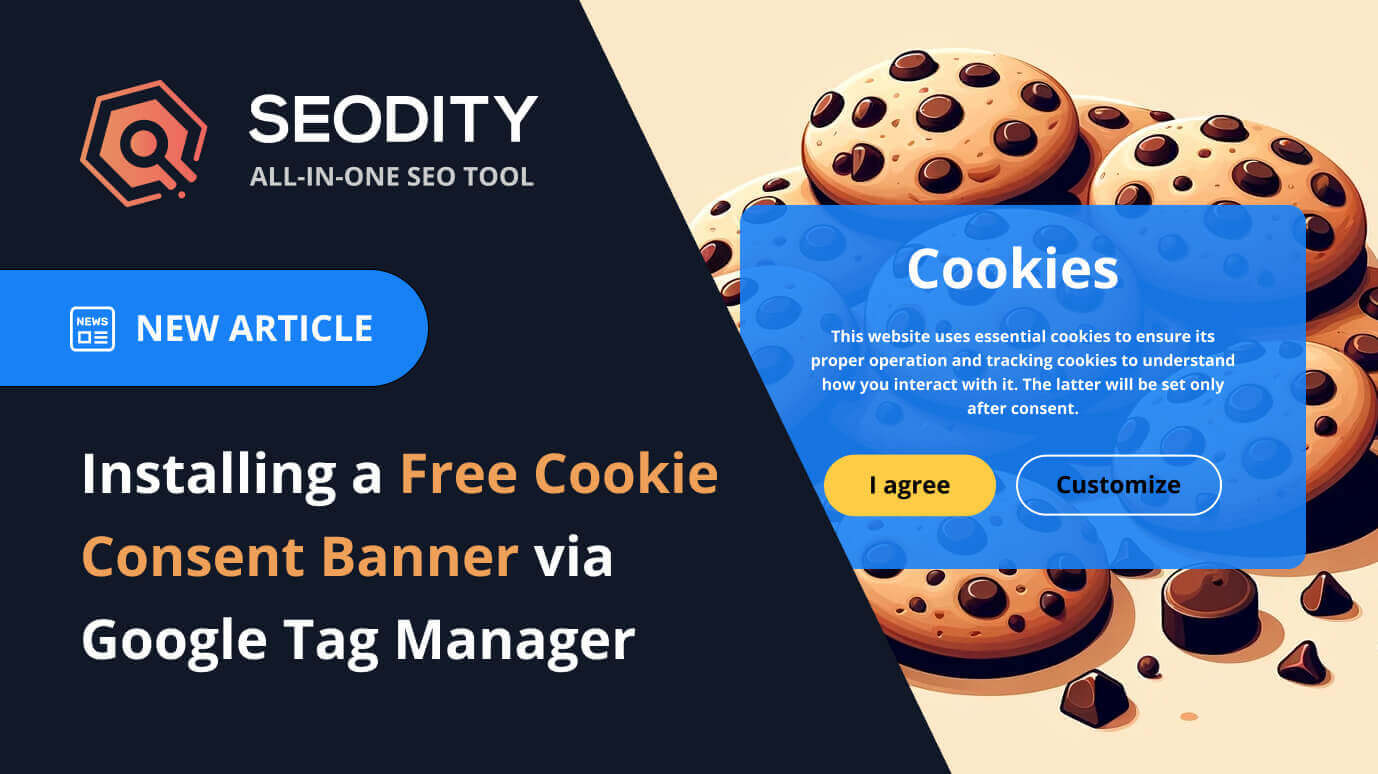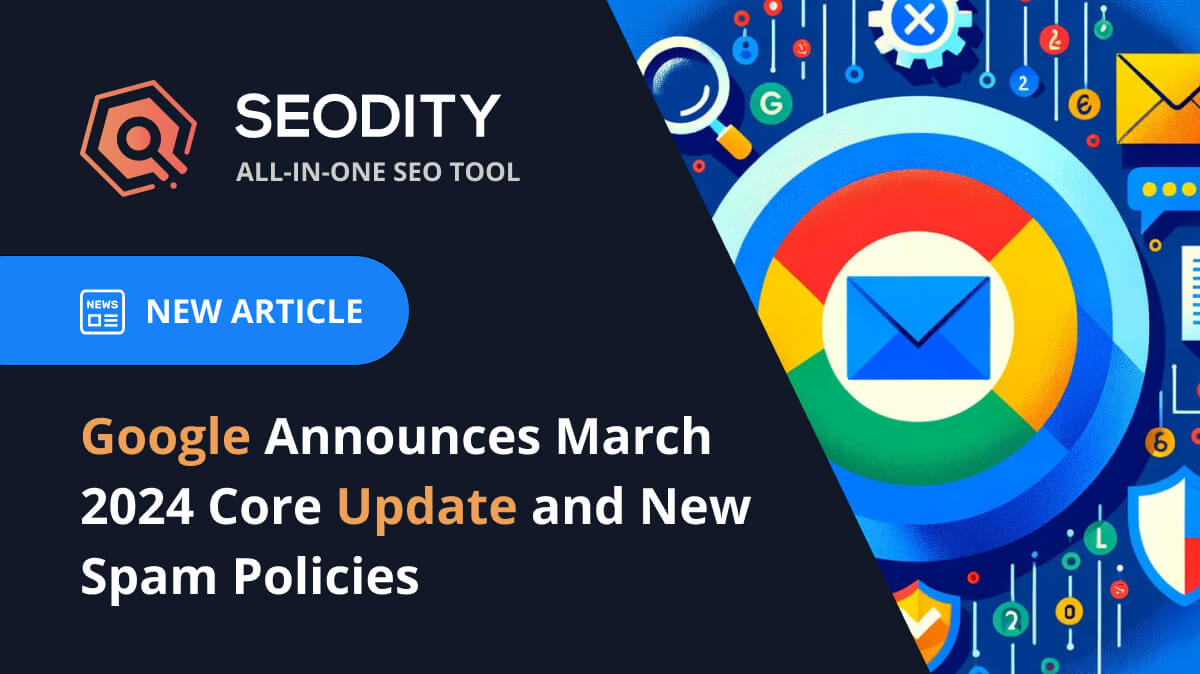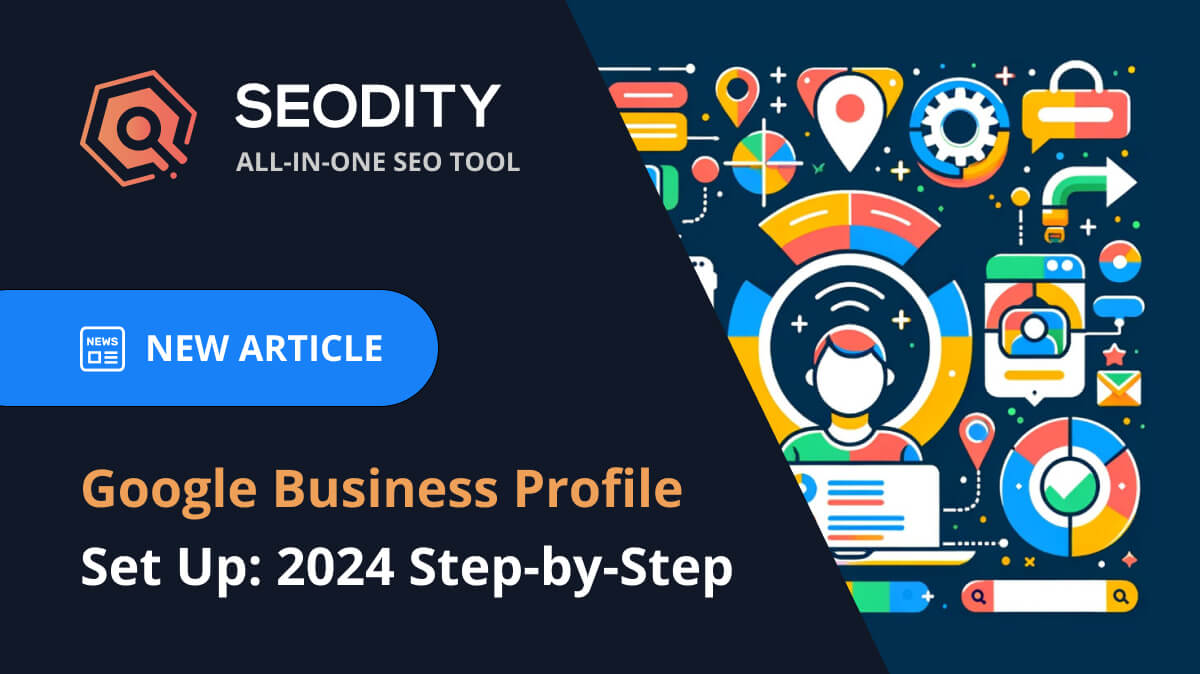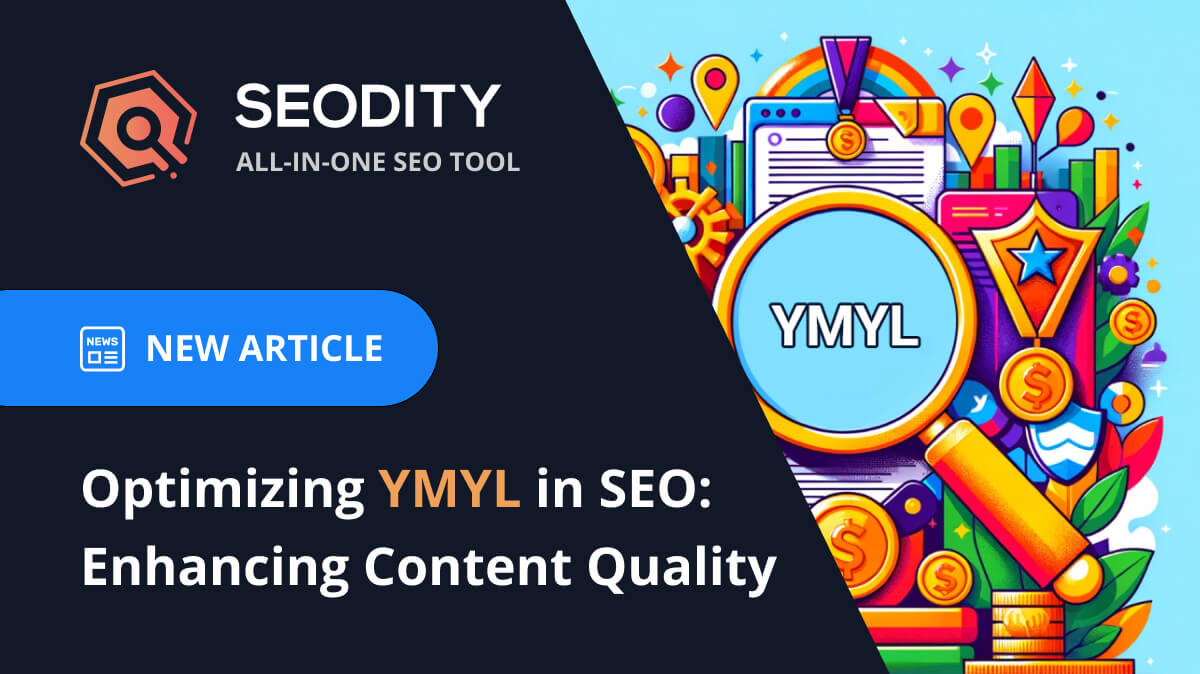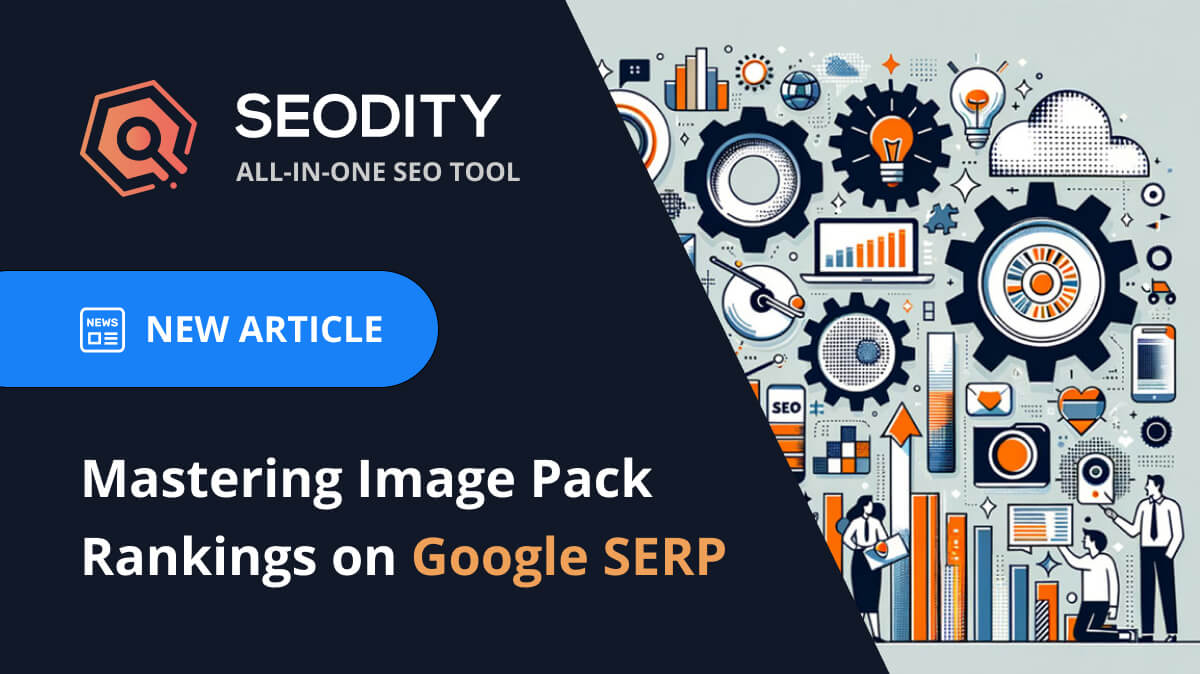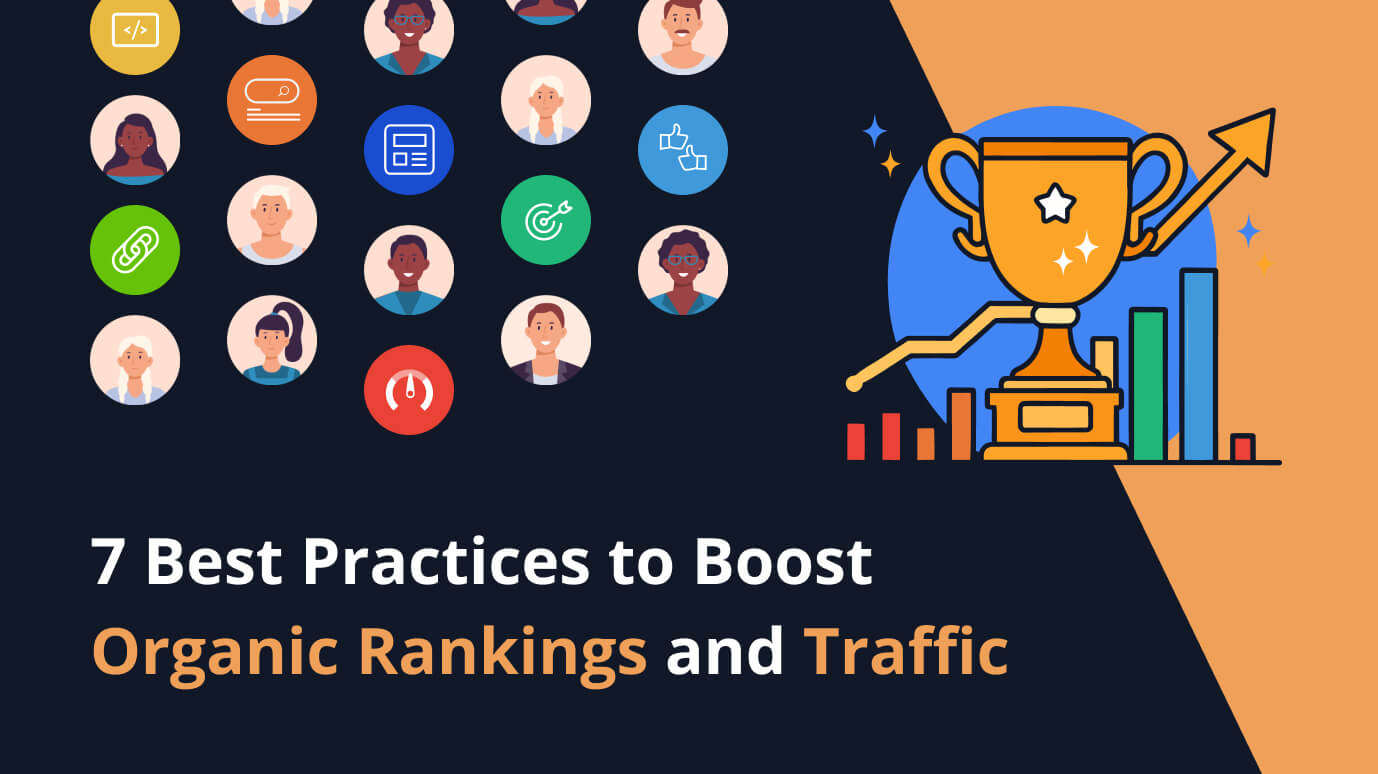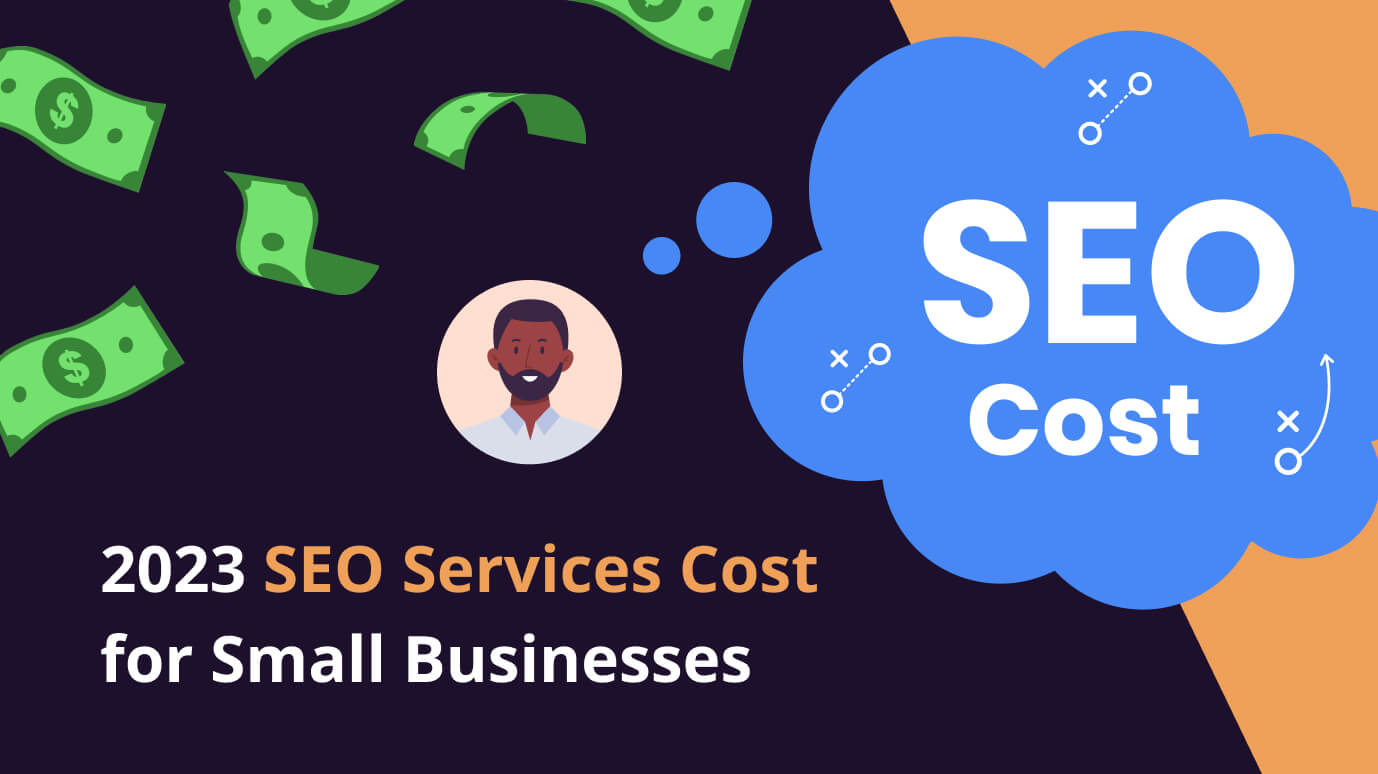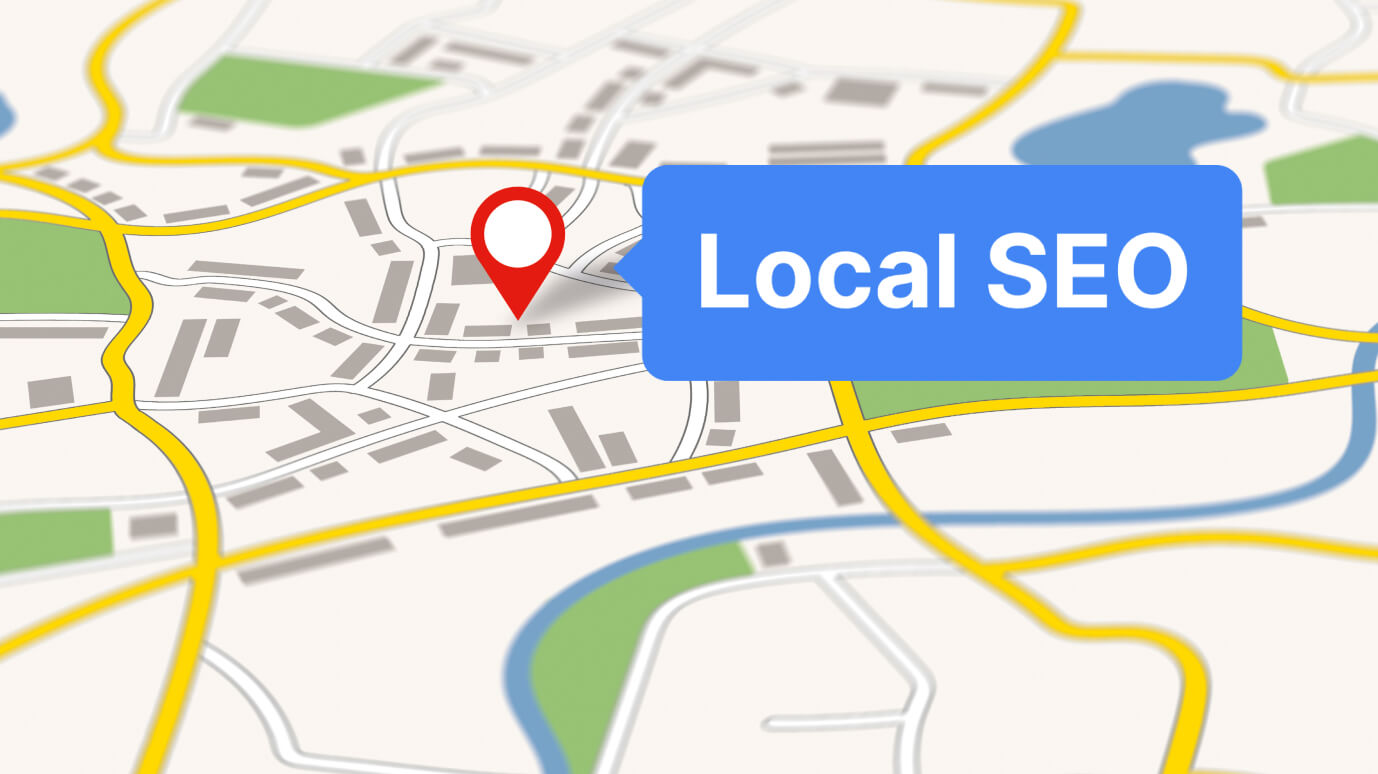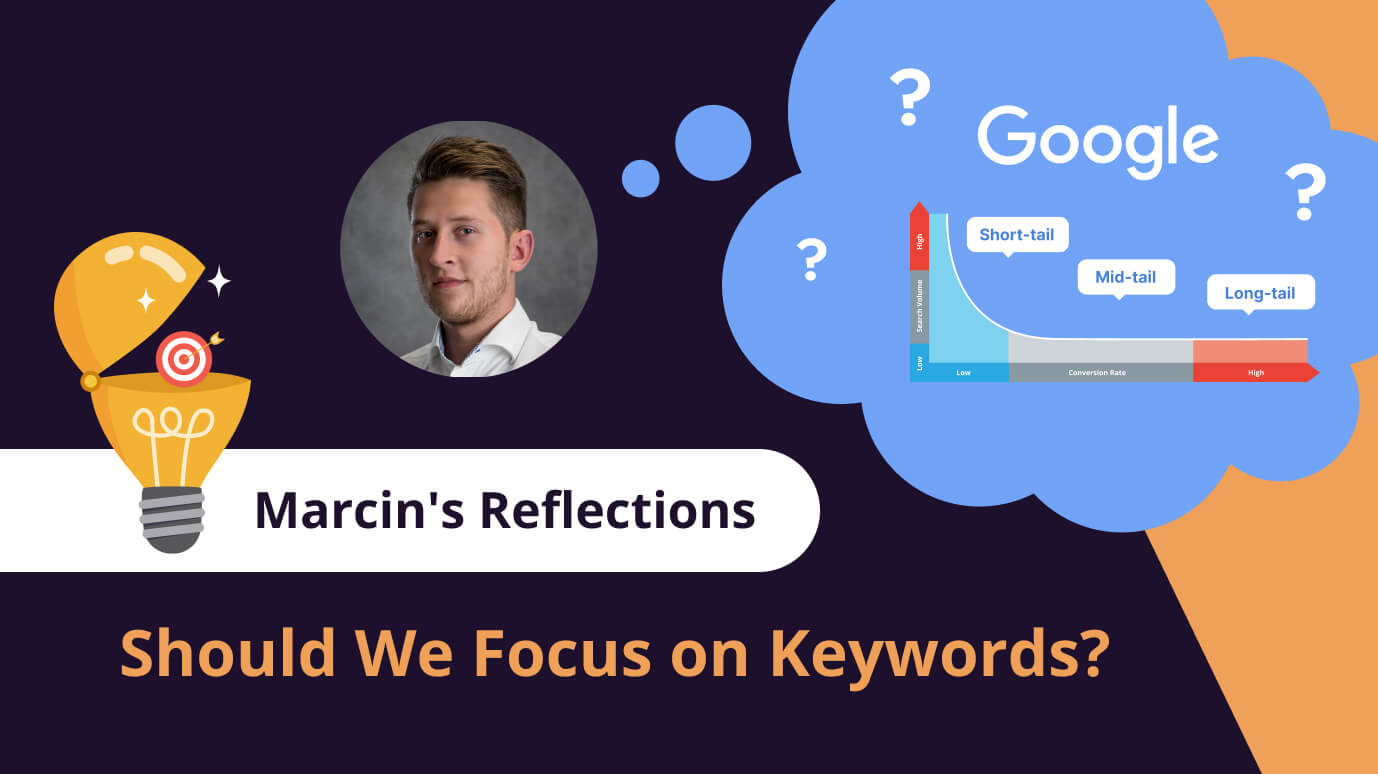
 35 min read
35 min readSERP 101: All About Search Engine Results Pages
The ABCs of SERPs: Understanding Search Engine Results Pages
1. Introduction
1.1. What are SERPs?
Search Engine Results Pages (SERPs) are the pages search engines display in response to a user's search query. When a user types a query into a search engine, such as Google or Bing, the search engine's algorithm analyzes the query and retrieves the most relevant results from its vast database of indexed web pages. The SERPs then present these results to the user in ranked order, with the most relevant and authoritative websites appearing at the top.
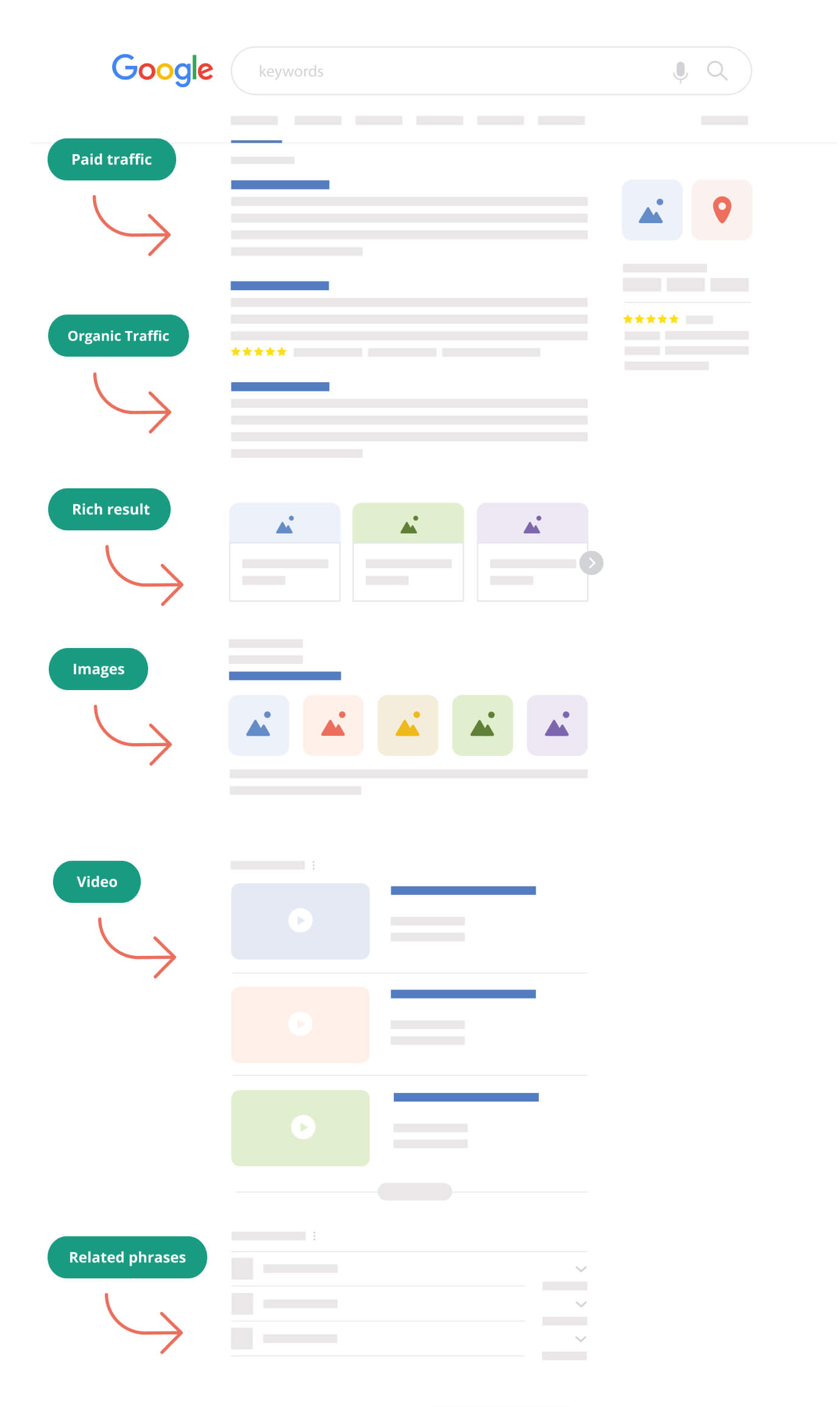
1.2. Importance of SERPs in digital marketing
Search Engine Results Pages (SERPs) are crucial in digital marketing, as they are the primary interface between users and search engines. Users searching for information, products, or services online rely on SERPs to present the most relevant and useful results. Understanding and optimizing for SERPs is essential for businesses looking to increase their online visibility, drive traffic, and ultimately generate leads and conversions. Below are some reasons why SERPs are important in digital marketing:
1. Visibility and brand awareness: Ranking high on SERPs can significantly improve a website's visibility and brand awareness. Users are more likely to click on results that appear on the first page, and particularly within the top positions. This increased exposure can lead to higher website traffic and better brand recognition.
2. Credibility and trust: Websites that rank higher on SERPs are often perceived as more credible and trustworthy by users. This perception can result in higher click-through rates (CTR) and increased user engagement with the website's content.
3. Organic traffic and cost-effectiveness: Organic search results in SERPs, which are not influenced by paid advertising, can drive a substantial amount of free, targeted traffic to a website. Investing in search engine optimization (SEO) to improve organic rankings is often more cost-effective than other digital marketing channels, such as pay-per-click (PPC) advertising or social media marketing.
4. User experience and intent: SERPs are designed to provide the best possible user experience by displaying relevant, high-quality content matching the user's search intent. Optimizing a website's content, structure, and performance to align with user intent and search engine ranking factors can result in better user experiences and higher conversion rates.
5. Competitive advantage: A solid understanding of SERPs and the factors that influence rankings can give businesses a competitive advantage in their respective industries. Businesses can outperform their competitors by optimizing their websites and digital marketing strategies to perform well on SERPs and capture a larger share of the online market.
6. Evolving search landscape: SERPs are constantly evolving to meet the changing needs of users and the advancements in search technology, such as voice search and mobile-first indexing. Staying informed about these changes and adapting digital marketing strategies accordingly can help businesses maintain or improve their rankings, ensuring continued online success.
2. Anatomy of a SERP
2.1. Organic search results
Organic search results refer to the non-paid listings that appear on search engine results pages (SERPs) when users enter a query. These results are generated by search engine algorithms, which aim to provide the most relevant and high-quality content in response to a user's search query. Organic search results are critical for businesses and website owners, as they can drive significant traffic to their sites without the cost associated with paid advertising.
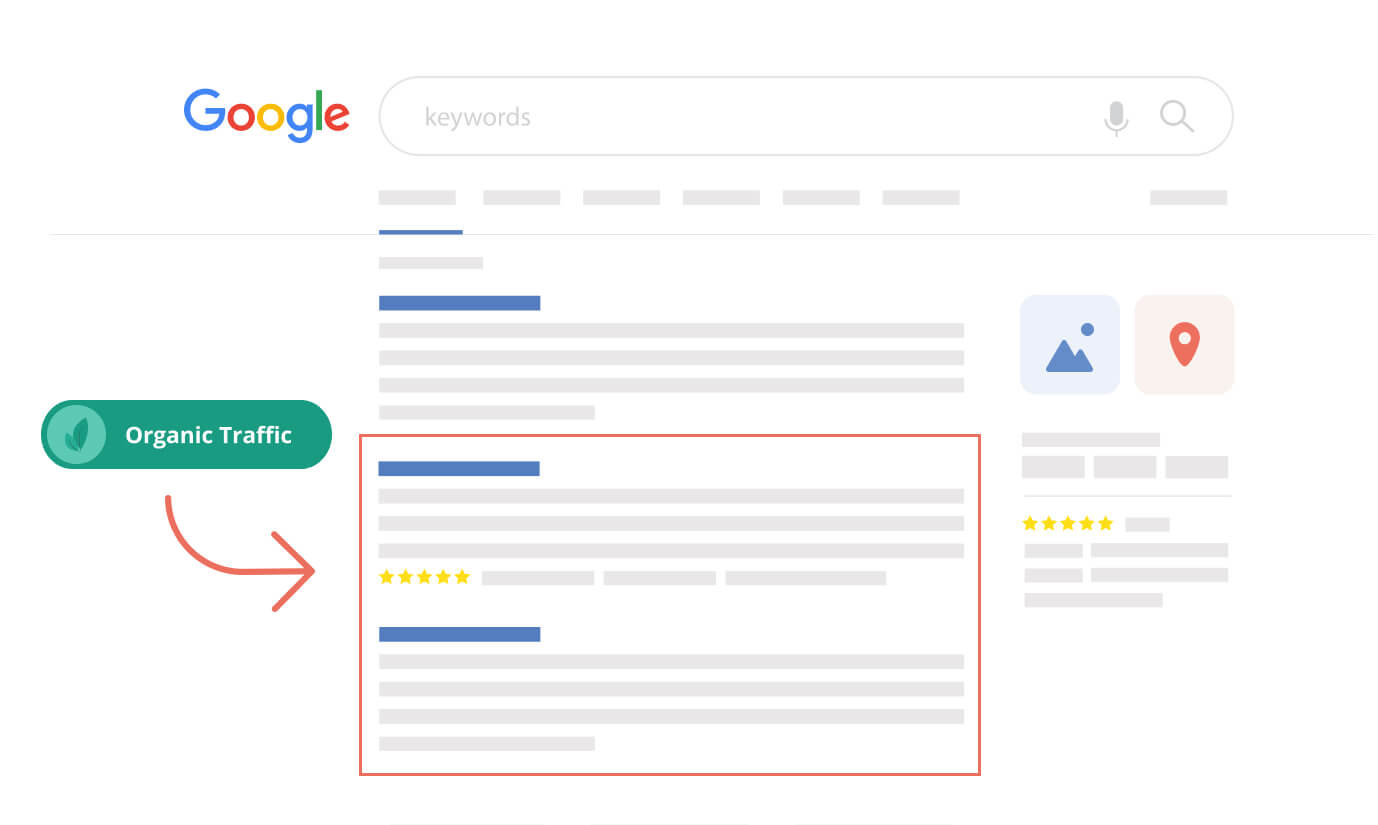
Key Aspects of Organic Search Results:
a) Relevance: Search engines like Google and Bing use complex algorithms to analyze various factors, such as the content and structure of a webpage, to determine its relevance to a user's search query. Websites with highly relevant content are more likely to appear in the top positions of organic search results.
b) Quality: High-quality content is a significant factor in organic search rankings. Search engine algorithms evaluate the quality of content by considering factors such as the information's depth and accuracy, the text's readability and structure, and the presence of relevant multimedia elements (images, videos, etc.).
c) Authority: The authority of a website is another crucial factor in organic search rankings. Websites with high domain authority, which is influenced by the number and quality of backlinks, social signals, and online reputation, are more likely to rank higher in organic search results.
d) User experience: Search engines also consider user experience when determining organic search rankings. Websites that offer a positive user experience, including fast loading times, mobile-friendliness, and easy navigation, are more likely to rank higher in organic search results.
e) Search engine optimization (SEO): SEO is the process of optimizing a website to improve its visibility and ranking in organic search results. This involves a range of on-page, off-page, and technical SEO techniques, such as keyword research, content creation, meta tags optimization, and link building.
The main differences between Google and Bing organic results:
a) Market share: Google has a significantly larger market share compared to Bing, leading to a higher focus on optimizing content for Google's algorithms.
b) Algorithm focus: Google prioritizes relevance, content quality, user experience, and authority, while Bing emphasizes user engagement, social signals, and local search results.
c) Keyword matching: Google focuses on the intent behind a user's search query, while Bing may place more weight on exact keyword matches.
d) Social signals: Bing factors in social signals more heavily in its search rankings than Google.
2.2. Paid search results

Paid search results, also known as pay-per-click (PPC) advertising or search engine marketing (SEM), are sponsored listings that appear at the top, bottom, or side of organic search results on search engines like Google, Bing, and Yahoo. Advertisers bid on specific keywords or phrases when users search for those terms to display their ads. The main characteristics of paid search results are:
a) Prominence and visibility: Paid search results are typically displayed in prominent positions on the search results page, often above or below the organic search results, increasing the likelihood of user engagement.
b) Ad format and labeling: Paid search results are labeled as ads or sponsored listings to distinguish them from organic search results. They may include additional information like headlines, descriptions, URLs, and ad extensions, such as phone numbers, locations, or call-to-action buttons.
c) Cost structure: Advertisers are charged on a pay-per-click (PPC) basis, meaning they pay only when a user clicks on their ad. The cost per click (CPC) depends on factors such as competition, ad quality, and the maximum bid set by the advertiser.
d) Keyword bidding and targeting: Advertisers bid on specific keywords or phrases relevant to their products or services. They can also target their ads based on factors like location, device, time of day, and user demographics to reach their desired audience.
e) Ad ranking: The position of paid search results depends on a combination of factors, including the advertiser's bid, ad quality, and relevance to the user's search query. Search engines use algorithms to determine the best ad placements to provide users with the most relevant and useful ads.
2.3. Featured snippets
Featured snippets are rich results that appear at the top of the organic search results in a search engine results page (SERP), often referred to as "position zero." These snippets aim to directly answer a user's query by displaying the most relevant and useful information from a webpage. Featured snippets can drive significant traffic to a website, as they are prominently displayed and help users quickly find answers to their questions.
Types of SERP features
Several types of featured snippets can appear on SERPs, depending on the nature of the search query and the content available on the indexed web pages. The most common types include:
a) Paragraph Snippets: These snippets display a brief excerpt from a webpage, usually in the form of a paragraph, that directly answers the user's query. This is the most common type of featured snippet.
b) List Snippets: List snippets showcase content in the form of a numbered or bulleted list. These are often used for step-by-step instructions or lists of items, such as recipes, tips, or top-rated products.
c) Table Snippets: Table snippets display data in a table format, making it easier for users to read and understand complex or structured information. These are particularly useful for comparing data, such as pricing, specifications, or statistics.

How to Optimize Content for Featured Snippets
While there is no guaranteed way to secure a featured snippet, optimizing your content with the following strategies can increase your chances of being featured:
a) Answer Questions Clearly and Concisely: Create content that directly answers common questions about your topic or industry. Ensure your answers are clear, concise, and easy to understand.
b) Use Structured Markup: Implementing structured data, such as schema markup, can help search engines better understand your content and increase the likelihood of being featured in snippets. Use appropriate schema types to describe your content and highlight important information.
More information about structured data you can find on the Google Developers website: https://developers.google.com/search/docs/appearance/structured-data/intro-structured-data?hl=en
You can also validate your structured data here: https://validator.schema.org/
c) Format Content for Readability: Organize your content using headings, subheadings, lists, and tables to make it easy for users and search engines to understand. Break up long paragraphs, and use bullet points or numbered lists when possible.
d) Target Long-Tail Keywords: Featured snippets often appear for long-tail keywords or question-based queries. Research and target relevant long-tail keywords in your content to increase your chances of being featured.
e) Monitor Competitor Snippets: Analyze the featured snippets your competitors are securing and study the structure, formatting, and content they use. Use this information to optimize your own content and compete for the same snippets.
2.4. Local SEO results (map pack)
Local SEO results, often referred to as the "map pack" or "local pack," are a special type of search result displayed in search engine results pages (SERPs) for location-based queries. These results prioritize businesses and services within a specific geographical area and are typically displayed as a group of three listings accompanied by a map highlighting their locations. Local SEO results are crucial for businesses with a physical presence and serve a local clientele, as they help users find relevant local services or products quickly and easily.

Key Components of Local SEO Results
a) Business Name: The name of the business or service being displayed in the local pack.
b) Address: The physical address of the business helps users identify its location and proximity to them.
c) Contact Information: The business's phone number and website URL, enabling users to get in touch or learn more about the business.
d) Reviews and Ratings: The average rating of the business based on customer reviews, providing users with social proof and an indication of the business's or service's quality.
e) Map: A map showing the listed businesses' locations helps users visualize their proximity and plan their route.
Improving Your Local SEO Results
To enhance your business's presence in local SEO results, consider implementing the following strategies:
a) Create and Optimize a Google My Business (GMB) Listing: Set up a GMB listing for your business and ensure it's complete and accurate. Verify your listing, add relevant information such as business hours, photos, and a description, and keep it up-to-date.
b) Build Local Citations: A citation is an online mention of your business's name, address, and phone number (NAP). Build local citations on relevant directories, review sites, and social media platforms to help search engines recognize your business's local presence.
c) Optimize Your Website for Local Keywords: Target location-specific keywords in your website's content, title tags, meta descriptions, and header tags to improve your visibility in local search results.
d) Manage Online Reviews: Encourage satisfied customers to leave reviews on your GMB listing and other review platforms. Respond to both positive and negative reviews, demonstrating your commitment to customer satisfaction.
e) Create Local Content: Develop content related to your local community, such as blog posts about local events, partnerships, or industry trends. This helps establish your business as an authority in your area and can improve your local search visibility.
f) Optimize for Mobile: Local searches are often conducted on mobile devices, so ensure your website is mobile-friendly and easy to navigate on various screen sizes.
2.5. People also ask (PAA) box
The People Also Ask (PAA) box is a search feature that appears on search engine results pages (SERPs) and provides users with a list of related questions and answers based on their search query. This feature helps users explore more information about a topic without leaving the SERP or conducting multiple searches. Each question in the PAA box can be expanded to reveal a brief answer, often in the form of a featured snippet and a link to the source website.

How the PAA Box Works
The PAA box is generated by search engines like Google, which use complex algorithms to analyze user search behavior and identify commonly asked questions related to a specific query. The questions displayed in the PAA box are not static and can change based on various factors, such as the user's search history, location, and personal preferences.
When a user clicks on a question in the PAA box, the answer is revealed, and additional related questions may be generated, encouraging further exploration of the topic. The source website for each answer is credited with a link, which can drive traffic to the site if the user wants to learn more.
Benefits of Appearing in the PAA Box
Being featured in the PAA box can provide several benefits for websites, including:
a) Increased Visibility: The PAA box appears prominently on the SERP, often above the fold, which can significantly increase your website's and content's visibility.
b) Higher Click-Through Rate (CTR): Users are likelier to click on a PAA answer that addresses their query directly, resulting in higher CTR and more traffic to your website.
c) Enhanced Brand Authority: Being featured in the PAA box can position your website as a trusted source of information, improving your brand's reputation and authority in your industry.
Optimizing for the PAA Box
While there is no guaranteed way to appear in the PAA box, you can increase your chances by following these best practices:
a) Identify Relevant Questions: Research the most common questions related to your topic or industry using tools like Google Trends, keyword research tools, and competitor analysis (for example, in Seodity, Ahrefs, or Semrush).
b) Create High-Quality Content: Develop content that directly addresses these questions, providing clear, concise, and informative answers.
c) Structure Your Content: Organize your content using headings, subheadings, lists, and tables to make it easy for users and search engines to understand. Use question-based headings (H2 or H3) to signal the questions your content addresses clearly.
d) Implement Structured Data: Use schema markup to add structured data to your content, which can help search engines better understand and index your content.
e) Monitor PAA Performance: Track the performance of your content in the PAA box using tools like Google Search Console and analyze the data to identify areas for improvement or new opportunities.
2.6. Knowledge graph
The Knowledge Graph is a knowledge base developed by Google to enhance its search engine results by providing users with more accurate, relevant, and comprehensive information. It organizes and understands facts, relationships, and entities from various sources, such as websites, structured data, and user-generated content. The Knowledge Graph allows Google to display rich, context-aware information directly on the search engine results pages (SERPs) in various formats, such as panels, carousels, and lists.
Key Components of the Knowledge Graph
a) Entities: The Knowledge Graph identifies and understands real-world objects, people, places, organizations, and concepts known as entities. Entities can have unique identifiers and attributes that help search engines understand and organize information about them.
b) Attributes: Attributes are properties or characteristics that provide more information about an entity. For example, the attributes of a book entity might include its title, author, publication date, and genre.
c) Relationships: The Knowledge Graph also recognizes the connections and relationships between different entities. These relationships help search engines understand the context and provide more relevant and accurate search results.
Knowledge Graph in SERPs
The Knowledge Graph displays information in various formats on the SERPs, depending on the search query and the available data. Some common formats include:
a) Knowledge Panel: A Knowledge Panel is a box that appears on the right side of the SERP and displays an overview of an entity. It can include basic information, images, social profiles, and relevant facts or attributes. Knowledge Panels often appear for searches related to specific people, places, organizations, or things.

b) Knowledge Carousel: A Knowledge Carousel is a horizontal list of related entities, such as movies, books, or events, displayed at the top of the SERP. Users can scroll through the carousel to explore additional information and related search results.

c) Instant Answers: Instant Answers are brief snippets of information that appear at the top of the SERP, directly answering a user's query. These answers are often sourced from the Knowledge Graph and may be accompanied by a link to the source website.

Optimizing for the Knowledge Graph
While there is no direct way to submit information to the Knowledge Graph, you can improve the chances of your content being included by following these best practices:
a) Implement Structured Data: Use schema markup to add structured data to your website's content, which can help search engines better understand, index, and display your information in the Knowledge Graph.
b) Create High-Quality, Comprehensive Content: Develop in-depth, accurate, and up-to-date content that provides valuable information about your topic or niche. Focus on covering all aspects of your subject and use a variety of content formats, such as text, images, videos, and infographics.
c) Build a Strong Online Presence: Establish your brand's online presence by creating and maintaining profiles on relevant platforms, such as social media networks, industry directories, and review websites. Consistently engage with your audience and share useful content to build trust and authority.
d) Earn Trustworthy Backlinks: Build high-quality backlinks from reputable and authoritative websites to demonstrate your website's credibility and increase its visibility to search engines.
2.7. Video, image, and news results
In addition to the traditional text-based search results, search engines like Google or Bing also display video, image, and news results on the search engine results pages (SERPs) when relevant to the user's query. These multimedia search results provide users with a richer and more diverse browsing experience, allowing them to access various types of content that cater to their specific needs and preferences.

Video Results
Video results are displayed on SERPs for queries that are likely to benefit from visual content. These results often appear as a carousel or in line with organic search results and include a thumbnail, video title, and the hosting platform or website. Video results can be particularly helpful for users seeking tutorials, demonstrations, or entertainment content.
To optimize your videos for search engine visibility:
a) Create High-Quality and Engaging Videos: Produce informative, entertaining, and visually appealing videos that cater to your target audience.
b) Use Descriptive Titles and Metadata: Write accurate and descriptive titles, descriptions, and tags for your videos, incorporating relevant keywords.
c) Leverage Transcripts and Closed Captions: Add transcripts and closed captions to your videos, as search engines can crawl this text to understand your video content better.
d) Host Your Videos on Reputable Platforms: Publish your videos on popular and reputable platforms such as YouTube or Vimeo, which are often favored by search engines.
Image Results
Image results appear on SERPs for queries that involve visual content or can benefit from visual representation. These results are displayed as a grid or carousel of thumbnails and can be clicked to view the full-size image or visit the source website. Image results are especially useful for users seeking visual inspiration, comparisons, or reference material.

To optimize your images for search engine visibility:
a) Use High-Quality and Relevant Images: Ensure your images are high-resolution, visually appealing, and relevant to your content.
b) Incorporate Descriptive File Names: Use descriptive file names for your images, including relevant keywords, separated by hyphens or underscores.
c) Optimize Alt Text: Add accurate and informative alt text to your images, describing the image content and incorporating relevant keywords.
d) Compress Images: Reduce your image file sizes using compression tools to improve your website's load time and overall user experience.
News Results
News results are displayed on SERPs for time-sensitive and trending queries, often appearing as a carousel or a separate "Top Stories" section. These results feature headlines, publication names, and timestamps, providing users with the latest and most relevant news articles for their search query.

To optimize your news content for search engine visibility:
a) Publish High-Quality and Relevant News Articles: Write informative, accurate, and timely news articles that cater to your target audience's interests.
b) Optimize Headlines: Use compelling and keyword-rich headlines that accurately reflect the content of your news article.
c) Employ Structured Data: Implement structured data markup, such as NewsArticle schema, to help search engines better understand and index your news content.
d) Submit Your Website to Google News: If your website primarily publishes news content, consider submitting it to Google News for increased visibility in news-related search results.
2.8. Sitelinks
Sitelinks are additional links displayed beneath the main search result in search engine results pages (SERPs), which provide users with direct access to specific pages or sections within a website. Search engines like Google or Bing automatically generate sitelinks; their appearance depends on the website's relevance, structure, and authority. By providing users with quick access to important pages, sitelinks can enhance the user experience, increase click-through rates, and improve the visibility of a website's key content.

Key Characteristics of Sitelinks
a) Relevance: Sitelinks are generated based on the user's search query and the website's content, ensuring that the additional links are relevant to the user's needs and interests.
b) Hierarchy: Sitelinks often reflect the website's structure and hierarchy, directing users to key sections or categories within site.
c) Authority: Sitelinks typically appear for websites that are recognized as authoritative and trustworthy by search engines.
Benefits of Sitelinks
a) Increased Visibility: Sitelinks occupy more space on the SERP, making search results more prominent and increasing the likelihood of user clicks.
b) Improved User Experience: By providing direct access to relevant pages within a website, sitelinks help users quickly find the information they're looking for, improving the overall user experience.
c) Higher Click-Through Rate: Sitelinks can encourage users to explore more content on your website, resulting in a higher click-through rate and increased traffic.
Optimizing for Sitelinks
While there is no guaranteed method to obtain sitelinks for your website, you can increase the likelihood of their appearance by following these best practices:
a) Create a Clear Site Structure: Organize your website's content using a clear and logical hierarchy, with categories, subcategories, and internal links that help both users and search engines navigate your site easily.
b) Use Descriptive and Unique Titles: Ensure that your website's pages have unique and descriptive title tags that accurately reflect their content, making it easier for search engines to identify relevant pages for sitelinks.
c) Implement Structured Data: Use schema markup to add structured data to your website, helping search engines better understand and index your content.
d) Build a Strong Backlink Profile: Acquire high-quality backlinks from reputable sources to establish your website's authority and trustworthiness, increasing the likelihood of sitelinks appearing in your search results.
e) Submit an XML Sitemap: Create and submit an XML sitemap to search engines, ensuring that all your important pages are indexed and easily discoverable.
3. Monitoring and Analyzing SERPs
3.1. Rank tracking tools
Rank tracking tools are essential for monitoring and analyzing the performance of your website in search engine results pages (SERPs). These tools help you track your website's ranking for specific keywords, monitor changes over time, and gain insights into your competitors' strategies. By using rank tracking tools, you can identify areas for improvement, optimize your SEO efforts, and ultimately drive more organic traffic to your website.
Key Features of Rank Tracking Tools
Keyword Rank Tracking: Rank tracking tools allow you to monitor your website's position in the SERPs for specific keywords or phrases, providing insights into your website's performance and visibility.
Historical Data: Most rank tracking tools store historical ranking data, enabling you to analyze trends, track progress, and identify patterns in your website's search performance over time.
Competitor Analysis: Rank tracking tools often include features that allow you to monitor and analyze your competitors' keyword rankings, providing valuable insights into their SEO strategies and uncovering potential opportunities for your own website.
Location and Device Targeting: Many rank tracking tools enable you to track keyword rankings across different locations and devices, helping you understand how your website performs for various target audiences and in different search environments.
Reporting and Visualization: Rank tracking tools typically offer customizable reporting and visualization features, making it easy to understand and communicate your website's search performance to stakeholders.
Popular Rank Tracking Tools
Several rank tracking tools are available on the market, each with its unique features and capabilities. Some popular rank tracking tools include:
1. Seodity:
Seodity is an all-in-one SEO platform that offers keyword rank tracking, on-page analysis, backlink monitoring, and competitor analysis. Its user-friendly interface and comprehensive feature set make it an excellent choice for businesses of all sizes.
Price starts from $18 / month for 350 keywords

2. SEMRush:
SEMRush is an all-in-one digital marketing suite that offers keyword rank tracking, competitor analysis, and a wide range of other SEO and marketing tools.
Price starts from $99.95 / month for 500 keywords

3. Ahrefs:
Ahrefs is a comprehensive SEO tool with keyword rank tracking, backlink analysis, and other SEO features. Its rank tracking module allows you to monitor your website's search performance over time and compare it with your competitors.
Price starts from $83 / month for 750 keywords

4. Moz Pro:
Moz Pro is an SEO software suite that includes keyword rank tracking as one of its core features. With Moz Pro, you can track your website's keyword rankings, analyze your competitors' performance, and generate customizable reports.
Price starts from $79 / month for 300 keywords

5. SERPWatcher:
SERPWatcher is a dedicated rank tracking tool developed by Mangools, focusing on tracking and monitoring keyword rankings, providing historical data, and generating insightful reports.
Price starts from $29.90 / month for 200 keywords

6. AccuRanker:
AccuRanker is a powerful and user-friendly rank tracking tool that offers real-time keyword rank tracking, competitor analysis, and advanced reporting features.
Price starts from €116 / month for 1000 keywords

3.2. Google Search Console
Google Search Console (GSC) is a free web service provided by Google that allows website owners, webmasters, and SEO professionals to monitor, maintain, and troubleshoot their website's presence in Google search results. GSC provides valuable insights and tools to help users optimize their websites for search engines, improve the user experience, and identify potential issues that could impact their site's search performance.

Key Features of Google Search Console
a) Performance Report: The Performance report in GSC provides detailed information on your website's search performance, including clicks, impressions, click-through rate (CTR), and average position for specific keywords and pages. You can filter the data by date, query, device, country, and more to gain deeper insights into your website's search visibility.
b) URL Inspection Tool: The URL Inspection tool allows you to analyze individual URLs on your website, providing information on their crawl, index, and serving status. This tool can help you identify potential issues, such as crawl errors, indexing problems, or mobile usability issues, and offers suggestions for resolving them.
c) Coverage Report: The Coverage report shows the index status of your website's pages, including any errors, warnings, or excluded pages. Reviewing this report, you can identify and fix issues preventing your pages from being indexed and ranked in Google search results.
d) Sitemaps: GSC allows you to submit XML sitemaps, which help Google discover and index your website's pages more efficiently. You can monitor the status of your sitemaps and receive notifications if any issues are detected.
e) Mobile Usability Report: The Mobile Usability report identifies pages on your website with mobile usability issues, such as small font sizes, clickable elements too close together, or content wider than the screen. This report helps you optimize your website for mobile devices and improve the user experience for mobile visitors.
f) Core Web Vitals: Core Web Vitals are a set of metrics that measure the user experience of your website in terms of loading speed, interactivity, and visual stability. GSC provides a Core Web Vitals report, which helps you identify and address issues that may impact your website's performance and user experience.
g) Manual Actions: If Google detects any violations of its Webmaster Guidelines on your website, you may receive a manual action notification in GSC. This section provides information on the specific issues and offers guidance on resolving them to regain your website's search visibility.
How to Get Started with Google Search Console
a) Create a Google Search Console Account: If you don't already have a GSC account, sign up for a free account using your Google credentials.
b) Verify Ownership of Your Website: To access your website's data in GSC, you'll need to verify your site ownership. GSC provides several verification methods, such as uploading an HTML file, adding a meta tag to your website's head section, or connecting your Google Analytics or Google Tag Manager account.
c) Submit Your XML Sitemap: If you have an XML sitemap for your website, submit it to GSC to help Google discover and index your pages more efficiently.
d) Explore the Reports and Tools: Familiarize yourself with GSC's various reports and tools and start using them to monitor and optimize your website's search performance.
Read more about Google Search Console in our A Comprehensive Guide for Beginners -> https://seodity.com/blog/google-search-console
3.3. Bing Webmaster Tools
Bing Webmaster Tools (BWT) is a free web service provided by Microsoft that allows website owners, webmasters, and SEO professionals to monitor, maintain, and troubleshoot their website's presence in Bing search results. Similar to Google Search Console, BWT offers a variety of tools and insights to help users optimize their website for Bing, improve the user experience, and identify potential issues that could impact their site's search performance.
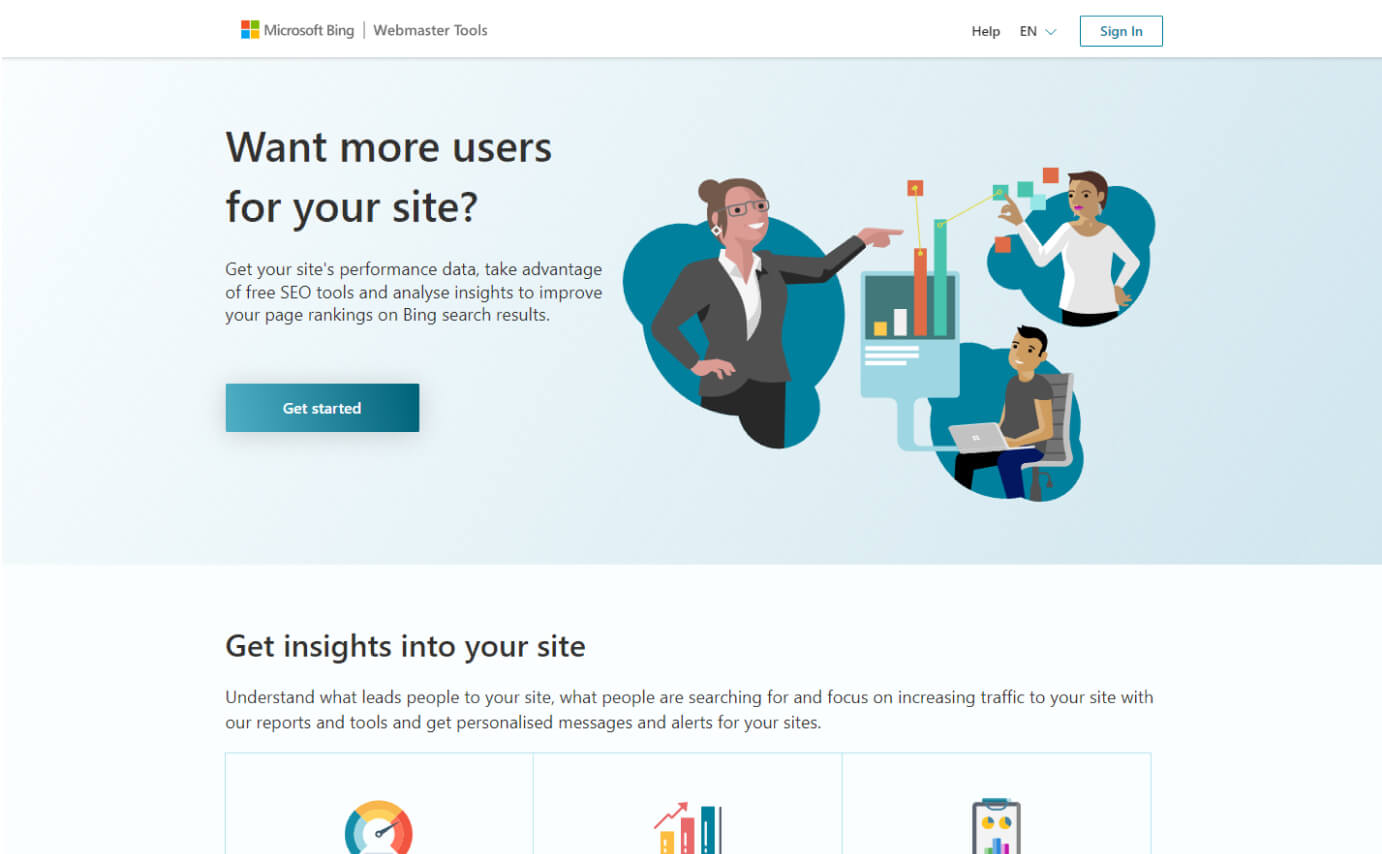
Key Features of Bing Webmaster Tools
a) Performance Report: The Performance report in BWT provides detailed information on your website's search performance, including clicks, impressions, click-through rate (CTR), and average position for specific keywords and pages. You can filter the data by date, query, device, and more to gain deeper insights into your website's search visibility on Bing.
b) URL Inspection Tool: The URL Inspection tool allows you to analyze individual URLs on your website, providing information on their crawl, index, and serving status. This tool can help you identify potential issues, such as crawl errors, indexing problems, or mobile usability issues, and offers suggestions for resolving them.
c) Site Explorer: Site Explorer is a feature in BWT that enables you to visualize and navigate your website's structure, including the hierarchy of pages and their relationships. This tool helps you understand how Bing crawls and indexes your website, and can assist in identifying potential issues with your site's architecture.
d) Sitemaps: BWT allows you to submit XML sitemaps, which help Bing discover and index your website's pages more efficiently. You can monitor the status of your sitemaps and receive notifications if any issues are detected.
e) Mobile Friendliness Test: The Mobile Friendliness Test in BWT evaluates your website's mobile usability, identifying any issues that may impact the user experience on mobile devices. This test helps you optimize your website for mobile visitors and improve their overall experience.
f) SEO Reports: BWT provides SEO reports that offer insights into your website's on-page SEO issues and opportunities, such as title tag and meta description optimization, broken links, and more. Addressing these issues can improve your website's overall SEO and search performance.
g) Backlinks: BWT includes a backlinks report that shows the number of backlinks pointing to your website and the referring domains and pages. This information can help you analyze your website's backlink profile and identify potential link-building opportunities.
How to Get Started with Bing Webmaster Tools
a) Create a Bing Webmaster Tools Account: If you don't already have a BWT account, sign up for a free account using your Microsoft credentials. https://www.bing.com/webmasters/about
b) Verify Ownership of Your Website: To access your website's data in BWT, you must verify your site ownership. BWT provides several verification methods, such as uploading an XML file, adding a meta tag to your website's head section, or connecting your Google Search Console account.
c) Submit Your XML Sitemap: If you have an XML sitemap for your website, submit it to BWT to help Bing discover and index your pages more efficiently.
d) Explore the Reports and Tools: Familiarize yourself with the various reports and tools available in BWT and start using them to monitor and optimize your website's search performance on Bing.
4. Conclusion
4.1. The future of SERPs
As technology and user behavior continue to evolve, search engine results pages (SERPs) are expected to undergo significant transformations to adapt to these changes. In this section, we will explore some potential trends and developments that could shape the future of SERPs.
Increased Use of Artificial Intelligence and Machine Learning
Search engines like Google and Bing are already leveraging artificial intelligence (AI) and machine learning (ML) to improve the relevance and quality of their search results. In the future, we can expect these technologies to play an even more prominent role in SERPs, enabling search engines to understand user intent better, deliver more personalized results, and adapt to the ever-changing landscape of online content.
Voice Search and Conversational AI
The growing popularity of voice-activated devices and digital assistants (e.g., Amazon Alexa, Google Assistant, and Apple's Siri) is changing how users interact with search engines. As voice search becomes more prevalent, SERPs must adapt to this new format, providing concise, relevant, and easily digestible answers to voice queries. Furthermore, conversational AI could lead to more dynamic, interactive search experiences, where users can engage in a dialogue with search engines to refine their queries and obtain more accurate results.
Enhanced Visual and Rich Media Experiences
As internet speeds and device capabilities continue to improve, we can expect to see an increased emphasis on visual and rich media content in SERPs. This may include more prominent video and image results, interactive elements, and immersive experiences like augmented or virtual reality. Search engines will likely develop new ways to index, rank, and display these types of content, creating more engaging and visually appealing search experiences for users.
Greater Emphasis on User Privacy and Data Security
As concerns about user privacy and data security continue to grow, search engines will likely emphasize protecting user information and providing more transparent, privacy-focused search experiences. This could lead to the development of new search algorithms that prioritize user privacy and the emergence of alternative search engines that differentiate themselves through their privacy policies and data handling practices.
Integration of Social Media and E-commerce
The lines between search engines, social media platforms, and e-commerce websites are becoming increasingly blurred. In the future, we may see more integration between these platforms, with SERPs directly incorporating real-time social media content, user-generated reviews, and e-commerce functionality into search results. This could provide users with more comprehensive, up-to-date information and enable them to make more informed decisions without having to navigate away from the search engine.
4.2. Final thoughts
Understanding search engine results pages (SERPs) is crucial for businesses and SEO professionals looking to improve their online presence and drive more organic website traffic. As we have explored throughout this article, SERPs consist of various elements, including organic listings, paid advertisements, featured snippets, and rich results. By familiarizing yourself with these components and the factors influencing search rankings, you can develop more effective SEO strategies and optimize your website for better visibility in search results.
As we look towards the future of SERPs, staying informed about the latest trends and developments in search engine technology, user behavior, and privacy concerns is essential. You can maintain a competitive edge in the constantly evolving digital landscape by keeping up-to-date with these changes and adapting your SEO approach accordingly.
5. Frequently Asked Questions (FAQs)
5.1. How often do SERPs change?
Search engine results pages (SERPs) are dynamic and constantly changing, influenced by numerous factors contributing to the fluctuation of search rankings. The frequency of these changes can vary, and understanding the reasons behind them can help businesses and SEO professionals stay ahead of the competition.
Factors Affecting SERP Changes
- Search Engine Algorithm Updates: Search engines like Google and Bing periodically update their search algorithms to improve the relevance and quality of search results. These updates can range from minor tweaks to significant overhauls, causing fluctuations in SERP rankings. Staying informed about these updates and adjusting your SEO strategy accordingly is crucial to maintain and improving your search visibility.
- Content Updates: As new content is published and existing content is updated or removed, SERPs will change to reflect the most relevant and up-to-date information for a given search query. Regularly updating and optimizing your website's content can help you stay competitive in the ever-changing SERPs.
- Competitor Activity: Your website's position in the SERPs is also influenced by the actions of your competitors. If a competitor optimizes their content, acquires high-quality backlinks, or makes other improvements to their SEO strategy, their search rankings may improve, potentially affecting your own rankings.
- User Behavior: Search engines constantly analyze user behavior, such as click-through rates, bounce rates, and dwell time, to better understand the relevance and quality of search results. If users consistently engage with a particular search result, it may be perceived as more valuable and increase in rankings. Similarly, if a search result consistently underperforms, it may drop in the rankings.
Personalization: SERPs are increasingly personalized based on individual user preferences, search history, and location. This means that two users may see different search results for the same query, and your website's position in the SERPs may vary from one user to another. Optimizing your website for local SEO and creating content that appeals to your target audience can help you stay visible in personalized SERPs.
5.2. What is the difference between organic and paid search results?
When users perform a search on a search engine like Google or Bing, the search engine results pages (SERPs) typically display two types of results: organic and paid. Understanding the key differences between these two types of search results is crucial for businesses and SEO professionals looking to drive traffic to their websites and develop effective online marketing strategies.
Organic Search Results
Organic search results are the listings that appear in the SERPs based on their relevance to the user's search query, as determined by the search engine's algorithm. These results are "earned" rather than purchased, meaning that any form of paid advertising does not influence them.
Key characteristics of organic search results include:
- Relevance: Organic search results are ranked based on their relevance to the user's search query, as determined by factors such as keyword usage, content quality, and site structure.
- Authority: Search engines also consider the authority of a website when ranking organic search results. Factors that contribute to a website's authority include the number and quality of backlinks, domain age, and social signals.
- Non-Payment: Websites do not pay for their position in organic search results. Instead, they must optimize their content and site structure to meet the search engine's ranking criteria.
Long-term strategy: Achieving high organic search rankings typically requires a long-term investment in SEO (Search Engine Optimization). This involves creating high-quality content, optimizing on-page and off-page factors, and building a strong backlink profile.
Paid Search Results
Paid search results, also known as pay-per-click (PPC) advertisements, are the listings that appear at the top and bottom of the SERPs as sponsored results. Advertisers purchase these results through bidding systems like Google Ads or Bing Ads.
Key characteristics of paid search results include:
- Payment: Advertisers pay for their position in the SERPs based on a cost-per-click (CPC) model. When a user clicks on a paid search result, the advertiser is charged a fee.
- Ad Auction: An ad auction system determines Paid search rankings, where advertisers bid on keywords relevant to their products or services. The highest bidder typically secures the top position in the paid search results, although factors like ad relevance and quality score also influence the ranking.
- Instant Visibility: Unlike organic search results, paid search results can provide instant visibility for a website. When an advertiser launches a PPC campaign, their ads can appear in the SERPs, potentially driving immediate traffic to their website.
Short-term strategy: Paid search advertising can be an effective short-term strategy for driving targeted traffic to a website, especially for time-sensitive promotions or seasonal campaigns.
5.3. How long does it take to rank on the first page of Google?
The time it takes to rank on the first page of Google varies depending on several factors, such as the competition for the targeted keywords, the quality of the website's content, the domain's age and authority, and the effectiveness of the SEO strategy employed. While it is difficult to provide a precise timeline for ranking on the first page, we can examine some factors that can influence the process.
Factors Influencing Ranking Time
- Keyword Competition: The level of competition for a keyword plays a significant role in how quickly a website can rank on the first page of Google. High-competition keywords, which are targeted by many websites, usually take longer to rank for compared to low-competition keywords. Identifying and targeting low-competition, long-tail keywords can help improve your chances of ranking more quickly.
- Content Quality: The quality of the content on your website is crucial for ranking on the first page of Google. High-quality, valuable, and engaging content is more likely to be shared, linked to, and favored by search engines. Investing time and effort into creating top-notch content can significantly improve your chances of ranking faster.
- Domain Age and Authority: Older domains with a strong backlink profile and established authority tend to rank faster on Google than newer websites with little to no authority. Building a solid backlink profile and improving your website's overall authority can help expedite ranking.
- SEO Strategy: Employing a comprehensive and effective SEO strategy is essential for achieving high rankings on Google. This includes optimizing on-page factors (e.g., title tags, meta descriptions, and header tags), creating a well-structured site with proper internal linking, and actively building high-quality backlinks. A well-executed SEO strategy can significantly impact how quickly your website ranks on the first page.
- Google Sandbox Effect: New websites often experience a period of limited visibility in Google search results, known as the Google Sandbox effect. This is believed to be a temporary measure that Google uses to prevent spammy websites from quickly ranking. The duration of the Google Sandbox effect varies but can last anywhere from a few weeks to several months.
General Timeline for Ranking on the First Page
While the exact timeline for ranking on the first page of Google is difficult to predict, a general estimate based on various case studies and industry experiences suggests that it can take anywhere from 3 to 6 months or longer for a well-optimized website to achieve first-page rankings for moderately competitive keywords. However, this timeline can vary greatly depending on the factors mentioned above.
5.4. What is the impact of social media on SERPs?
Social media has become an essential part of the digital landscape and has a noticeable impact on search engine results pages (SERPs). Although search engines like Google and Bing have stated that social signals are not a direct ranking factor, the indirect effects of social media on SEO and search rankings cannot be ignored. Here are some ways social media can influence SERPs:
1. Increased Content Visibility and Reach
Sharing content on social media platforms such as Facebook, Twitter, LinkedIn, and Instagram can help increase the visibility and reach of your content. This increased exposure can lead to more clicks, shares, and engagement, indirectly boosting your search rankings. When more people see and interact with your content, there is a higher likelihood that they will link to it from their own websites or blogs, creating valuable backlinks that can positively impact your search rankings.

2. Faster Content Indexing
Search engines discover new content through a process called crawling and indexing. When you share your content on social media platforms, search engines can index it faster, as they frequently crawl popular social media sites for new content. Faster indexing means your content has a better chance of being found by users searching for relevant information.

3. Brand Awareness and Authority
An active and engaging social media presence can help improve brand awareness and authority. People who recognize and trust your brand are likelier to click on your website in the SERPs, increasing your click-through rate (CTR). Search engines often consider CTR as an indirect ranking signal, indicating that users find your content relevant and valuable.

4. Social Signals as an Indirect Ranking Factor
While social signals (e.g., likes, shares, and comments) are not direct ranking factors, they can have an indirect impact on your search rankings. High social media engagement levels can lead to more organic links and citations, which can positively affect your search rankings. Additionally, social signals can measure content quality, as search engines may consider content with high engagement to be more valuable and relevant to users.

5. Local SEO and Social Media
An active and optimized social media presence can positively impact local search rankings for businesses with a local presence. Ensuring that your social media profiles contain accurate and consistent information about your business, such as name, address, and phone number (NAP), can help improve the accuracy of local citations and enhance your local search visibility.

5.5. Can negative SEO affect my website's ranking on SERPs?
Negative SEO refers to the practice of using unethical techniques to sabotage a competitor's search rankings. While search engines like Google have implemented numerous safeguards to prevent negative SEO from significantly impacting website rankings, it is still possible for such tactics to cause harm in some cases. Here are some common negative SEO methods and their potential impact on your website's ranking in SERPs:
1. Spammy Backlinks
One of the most common negative SEO tactics is creating many low-quality or spammy backlinks to a competitor's website. These low-quality backlinks can potentially harm a website's ranking, as search engines may perceive the website as being associated with spammy or untrustworthy sources.
Read more about spam links and how to find them in our article: https://seodity.com/blog/find-spam-links
However, Google's algorithm has evolved over time and is now better equipped to identify and ignore such low-quality links. For example, the introduction of the Penguin algorithm update focuses on devaluing spammy links rather than penalizing the targeted websites. Moreover, Google's Disavow Tool allows webmasters to report and disavow harmful backlinks, minimizing the impact of negative SEO attacks.

2. Content Scraping and Duplicate Content
Another negative SEO tactic involves scraping or copying a website's content and republishing it on other websites, which can lead to duplicate content issues. Search engines may have difficulty determining the original source of the content, potentially diluting the ranking power of the targeted website.
To combat content scraping and duplicate content issues, it is crucial to implement canonical tags on your website, which inform search engines about the preferred version of a webpage. Additionally, regularly monitoring for duplicate content using tools like Copyscape or Google Search Console can help identify and address potential negative SEO attacks.
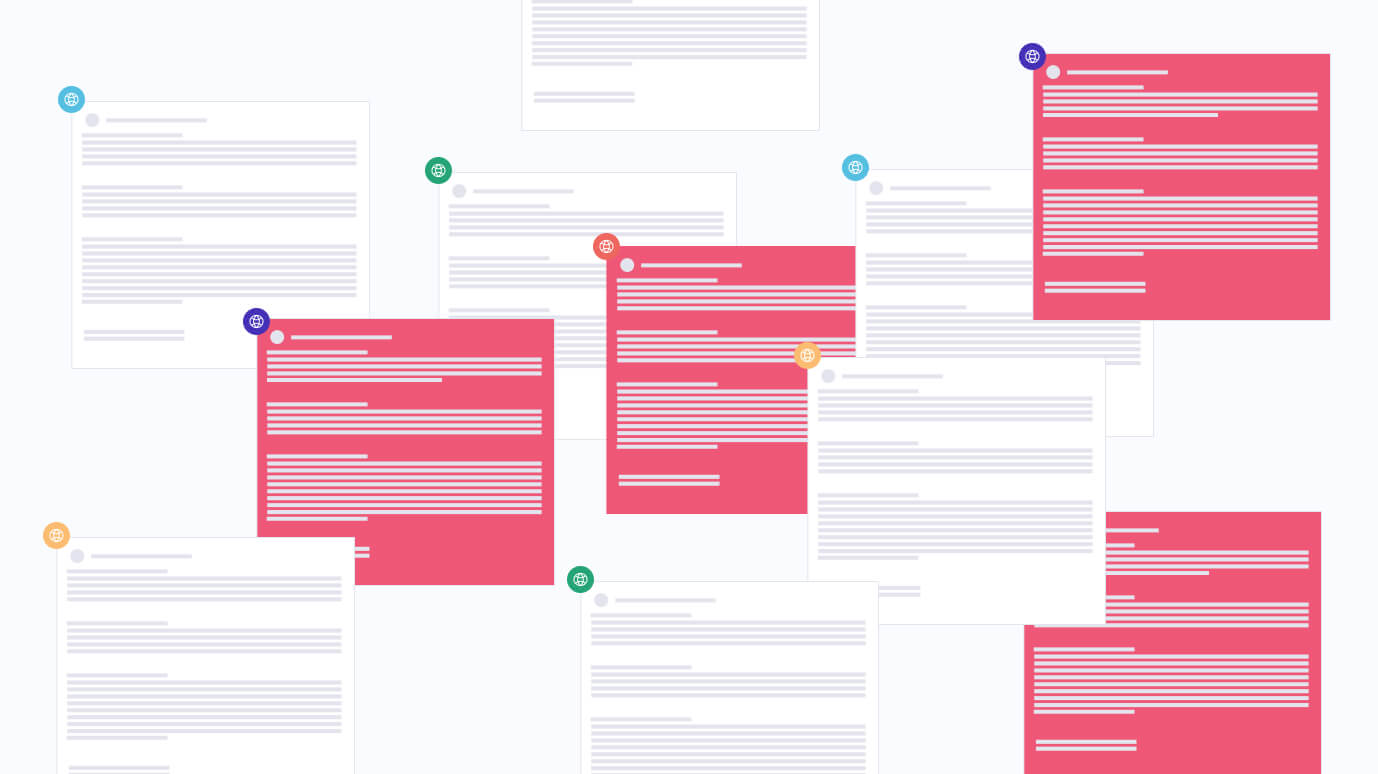
3. Hacking and Malware Injection
In more extreme cases, negative SEO can involve hacking into a competitor's website and injecting malicious code or malware. This can severely damage a website's reputation and search rankings, as search engines may flag the site as unsafe for users.
To protect your website from hacking and malware injection, it is essential to implement strong security measures, such as using secure hosting, updating software and plugins regularly, and employing strong passwords and two-factor authentication.

4. Fake Reviews and Online Reputation Attacks
Negative SEO can also target a website's online reputation, with attackers leaving fake negative reviews or creating harmful content about the targeted business. While these tactics may not directly impact search rankings, they can damage the brand's reputation and discourage potential customers.
To address fake reviews and online reputation attacks, businesses should actively monitor their online presence and respond to negative reviews professionally and promptly. Employing reputation management strategies and focusing on generating positive customer reviews can help counteract the effects of negative SEO tactics.


Marcin is co-founder of Seodity
.svg)


